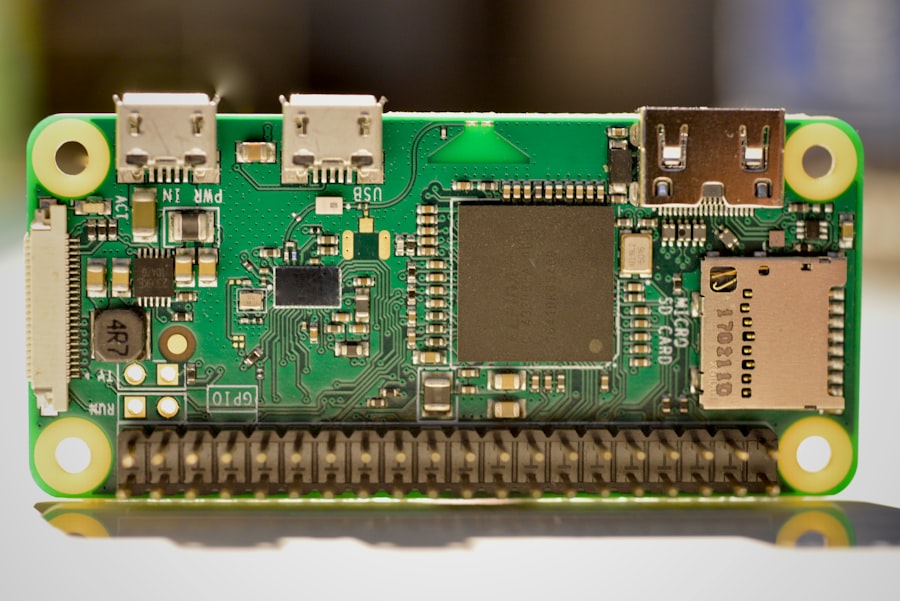Artificial Intelligence (AI) has been rapidly evolving in recent years, with groundbreaking advancements in various fields. The latest AI technology encompasses a wide range of innovations, from natural language processing to computer vision and autonomous systems. These developments have the potential to revolutionize industries and improve the way we live and work.
As AI continues to progress, it is important to understand the latest trends and their implications for society. The latest AI technology is characterized by its ability to process and understand natural language, interpret visual data, and make autonomous decisions. These advancements are made possible by the use of advanced algorithms, machine learning, and deep learning techniques.
As a result, AI systems are becoming more sophisticated and capable of performing complex tasks that were once thought to be exclusive to human intelligence. With the integration of AI into various applications and industries, there is a growing need to address ethical considerations and mitigate biases in AI systems. The future of AI holds great promise, but it also presents challenges that must be carefully navigated.
Advancements in Natural Language Processing
Enabling Machines to Understand Human Language
One of the most significant advancements in the latest AI technology is in the field of natural language processing (NLP). NLP focuses on enabling machines to understand and interpret human language, allowing for more natural and intuitive interactions between humans and AI systems. Recent developments in NLP have led to the creation of advanced language models that can generate human-like text and understand context and nuance in language.
Revolutionizing Communication and Content Generation
These models have the potential to revolutionize communication, content generation, and customer service. The latest NLP technology has also made significant strides in multilingual processing, allowing AI systems to understand and generate text in multiple languages. This has broad implications for global communication and accessibility, as it enables AI systems to interact with users from diverse linguistic backgrounds.
Improving Sentiment Analysis and Emotional Intelligence
Additionally, advancements in NLP have led to improvements in sentiment analysis, allowing AI systems to understand and interpret human emotions expressed in text. This has applications in customer feedback analysis, social media monitoring, and mental health support.
Breakthroughs in Computer Vision

Another area of significant advancement in the latest AI technology is computer vision, which focuses on enabling machines to interpret and understand visual data. Recent breakthroughs in computer vision have led to the development of advanced image recognition and object detection systems that can accurately identify and classify visual content. These advancements have broad applications in fields such as healthcare, manufacturing, transportation, and security.
The latest computer vision technology has also made significant strides in facial recognition and biometric identification, enabling AI systems to accurately identify individuals based on their unique facial features or other biometric data. This has implications for security, law enforcement, and personalized user experiences. Additionally, advancements in computer vision have led to improvements in image generation and manipulation, allowing AI systems to create realistic visual content and enhance existing images.
These developments have the potential to revolutionize content creation, design, and visual storytelling. Overall, the latest breakthroughs in computer vision are driving innovation across various industries and opening up new possibilities for visual data analysis.
Innovations in Autonomous Systems
The latest AI technology has also seen significant innovations in autonomous systems, which focus on enabling machines to make independent decisions and perform tasks without human intervention. These advancements have led to the development of autonomous vehicles, drones, robots, and other intelligent systems that can navigate and operate in complex environments. The integration of AI into autonomous systems has the potential to revolutionize transportation, logistics, manufacturing, and other industries.
Recent innovations in autonomous systems have focused on improving decision-making capabilities, sensor technologies, and environmental awareness. This has led to advancements in autonomous navigation, object avoidance, and path planning, allowing machines to operate safely and efficiently in dynamic environments. Additionally, advancements in AI have led to improvements in collaborative autonomy, enabling multiple autonomous systems to work together towards a common goal.
This has applications in swarm robotics, coordinated drone operations, and distributed manufacturing processes. Overall, the latest innovations in autonomous systems are driving the development of intelligent machines that can perform complex tasks with minimal human oversight.
Enhanced AI Ethics and Bias Mitigation
As AI technology continues to advance, there is a growing need to address ethical considerations and mitigate biases in AI systems. The latest developments in AI ethics focus on ensuring that AI systems are designed and deployed responsibly, with consideration for fairness, transparency, and accountability. This includes efforts to mitigate biases in AI algorithms, ensure privacy and data protection, and promote ethical decision-making by AI systems.
Recent advancements in AI ethics have led to the development of fairness-aware algorithms that can detect and mitigate biases in AI systems. These algorithms aim to ensure that AI systems make fair and unbiased decisions across diverse populations. Additionally, efforts have been made to improve transparency and explainability in AI systems, allowing users to understand how decisions are made and why certain outcomes are predicted.
This has implications for regulatory compliance, risk management, and user trust. Overall, the enhanced focus on AI ethics is driving the development of responsible AI systems that prioritize fairness, transparency, and accountability.
Impact of Generative Adversarial Networks

Generative Adversarial Networks (GANs) have revolutionized the field of AI technology, holding immense potential for image generation, content creation, and data synthesis.
Understanding GANs
GANs comprise two neural networks – a generator and a discriminator – that collaborate to produce realistic synthetic data. This technology has far-reaching applications in various fields, including art generation, image editing, video synthesis, and data augmentation.
Impact on Creative Industries
The impact of GANs on the latest AI technology is substantial, as they enable machines to generate high-quality visual content that closely resembles real images or videos. This has significant implications for creative industries such as design, advertising, and entertainment, as it allows for the creation of realistic visual assets without human intervention.
Applications Beyond Creative Industries
Additionally, GANs have been utilized for data synthesis in fields such as healthcare, finance, and cybersecurity, allowing for the generation of realistic synthetic data for training AI models. This has opened up new avenues for innovation and growth across various sectors.
Driving Innovation Across Industries
Overall, the impact of GANs on the latest AI technology is driving innovation in content generation and data synthesis across various industries.
Future Implications and Applications of the Newest AI
The future implications of the newest AI technology are vast and far-reaching, with potential applications across various industries and domains. In healthcare, the latest AI technology has the potential to revolutionize medical diagnosis, drug discovery, personalized treatment plans, and patient care. AI-powered diagnostic tools can analyze medical images and patient data to identify diseases and recommend treatment options with high accuracy.
Additionally, AI-driven drug discovery platforms can accelerate the development of new medications by analyzing vast amounts of biological data. In finance, the newest AI technology has implications for fraud detection, risk management, investment strategies, and customer service. AI-powered fraud detection systems can analyze transaction data in real-time to identify suspicious activities and prevent financial crimes.
Additionally, AI-driven risk management platforms can assess market trends and predict potential risks with high precision. In customer service, AI-powered chatbots can provide personalized assistance to customers by understanding their queries and providing relevant information or support. In conclusion, the latest AI technology is driving innovation across various fields such as natural language processing, computer vision, autonomous systems, ethics mitigation bias GANs among others.
These advancements have significant implications for society as they pave the way for more natural human-AI interactions improved visual data analysis responsible deployment of AI systems realistic synthetic data generation among others. As these technologies continue to evolve it is important for society to carefully navigate their implications while leveraging their potential for positive impact across various industries.
If you’re interested in the latest advancements in AI, you might also want to check out this article on AI Presidential Election Predictions. It delves into how artificial intelligence is being used to forecast the outcomes of political races, offering a fascinating look at the potential applications of AI in the realm of politics.



